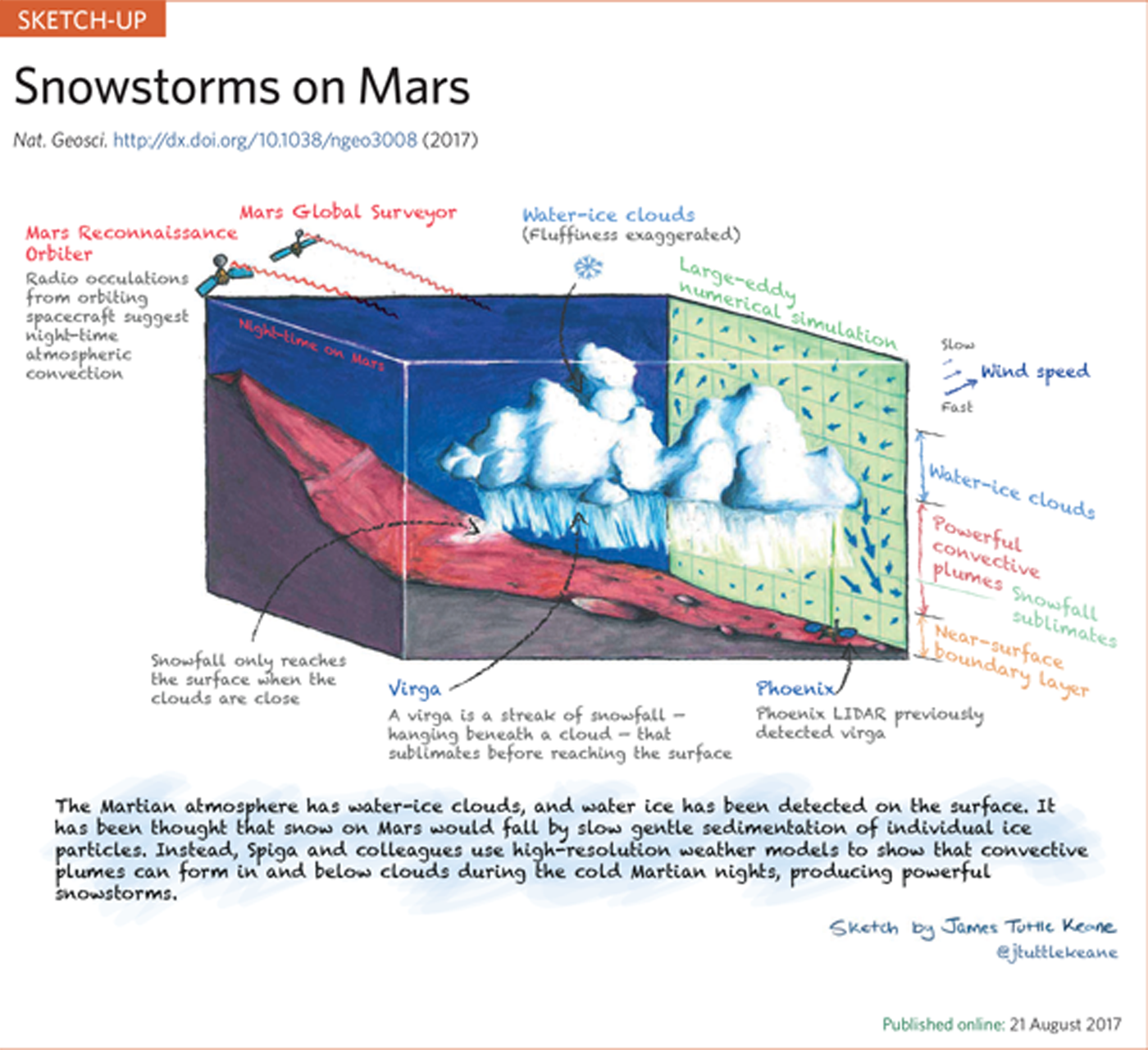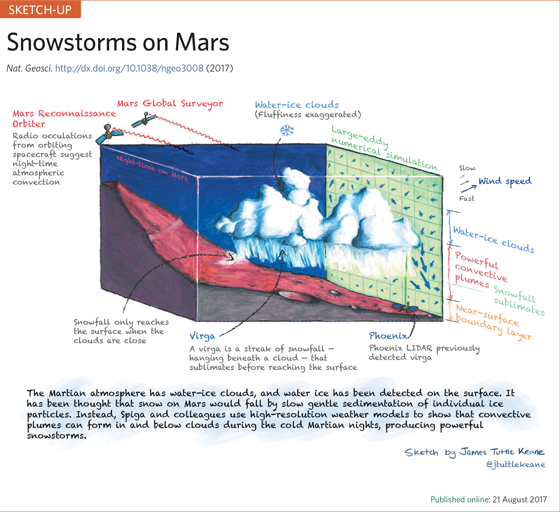Night-time weather activity on Mars differs from typical weather patterns on Earth.

New research about the atmosphere of Mars was published by Nature Geoscience in an article co-authored by SETI Institute scientist, David Hinson. The article, Snow precipitation on Mars driven by cloud-induced night-time convection, is available online. Other co-authors of the article were Aymeric Spiga, Jean-Baptiste Madeleine, Thomas Navarro, Ehouarn Millour, Francois Forget and Franck Montmessin.

David Hinson was responsible for the radio occultation measurements that revealed the presence of unexpected night-time convection, or turbulent mixing, in the lower atmosphere of Mars. Radio occultation uses radio signals for remote sensing of planetary atmospheres and rings.
The research team shows that the convection, which arises from radiative cooling by water-ice clouds, triggers intense descending air currents and localized nocturnal snowstorms. “The high-resolution atmospheric models explain surprising observations from orbit by Mars Global Surveyor and Mars Reconnaissance Orbiter as well as from the surface by the LIDAR instrument on the Phoenix lander,” says Hinson. “The night-time weather is much more intense than had been expected, with implications for our understanding of the annual water cycle.” This sort of night-time weather activity differs from typical weather patterns on Earth.





